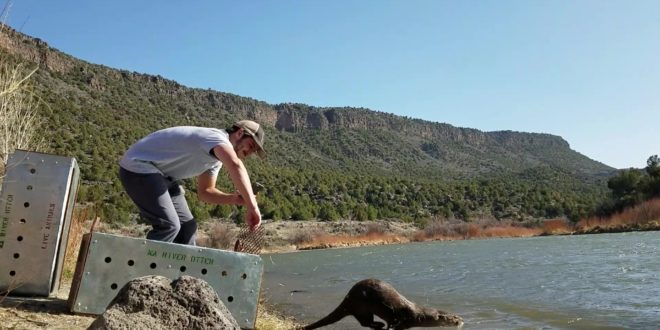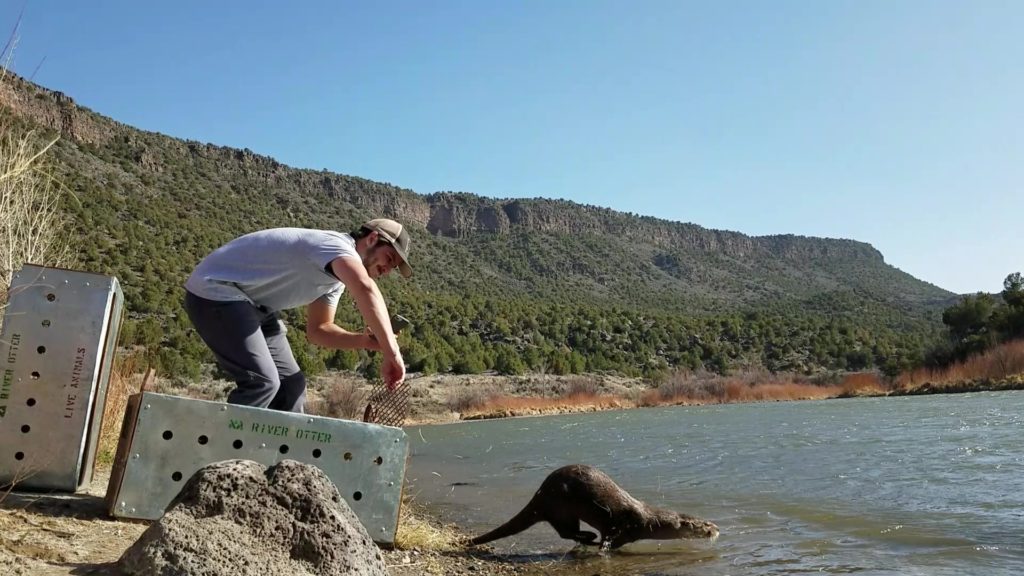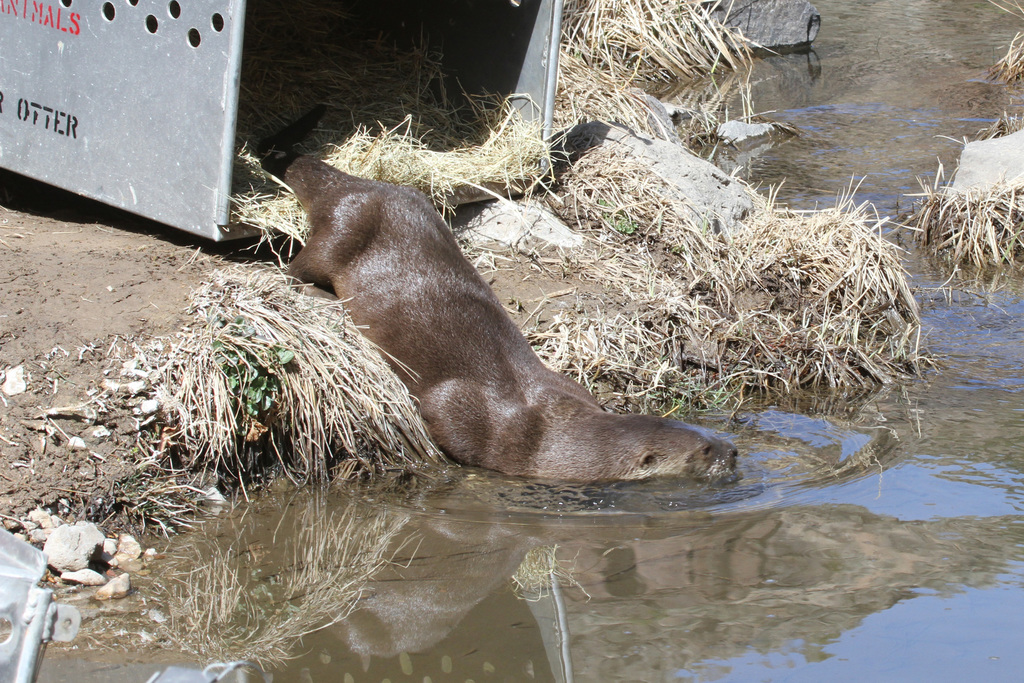The North American river otter (Lontra canadensis), a member of the weasel family (Mustelidae), is a semiaquatic mammal endemic to the North American continent. Originally native to New Mexico’s Gila River, the Rio Grande and the Canadian River, this species has been sadly absent from the Southwest since the 1950s.
Deforestation, pollution and unregulated trapping all contributed to their disappearance—until now! Thanks to concerted conservation efforts, river otters have been returning to their native habitat in northern New Mexico for more than a decade.
Our conservation experts, including Carnivore and Small Mammal Program Manager Nick Forman and Non-Game Mammal Specialist Jim Stuart, are monitoring otter populations and documenting the success of recovery efforts. Since 2008, river otters have become an increasingly common sight in the upper Rio Grande, from Cochiti Lake up to the Colorado border.
Most of these otters were reintroduced from Washington state, but nine additional otters were released into the upper Rio Grande in 2021 to boost the genetic diversity of that population. These newcomers came from Abbeville, Louisiana in style: they were flown in free of charge thanks to Light Hawk Conservation Flying, a company that accelerates conservation efforts through the gift of flight.
With the help of the Louisiana Department of Wildlife and Fisheries (LDWF), we’ve contracted trapper Ryan Schaefer, who removes nuisance otters depredating crawdad farms. Schaefer works with the LDWF to transfer nuisance otters to zoos or other states as needed.
Otter reintroduction is going so well that one citizen even caught a river otter bounding through the snow on his security camera! In November 2022, we were contacted by a landowner near Eagle Nest Lake who couldn’t believe his eyes.
His security camera was activated by a river otter moving across the snow. This is the first verified river otter by the Cimarron River in New Mexico—and possibly along the entire length of the Canadian River. This suggests that otter dispersal is spreading across its native range, even through high-elevation habitats.
As these populations expand and flourish, we are excited by the marked success of this conservation effort. Any future sightings of otters in unexpected locations will further confirm this species’s incredible recovery in New Mexico.
 New Mexico Wildlife magazine Conserving New Mexico's Wildlife for Future Generations
New Mexico Wildlife magazine Conserving New Mexico's Wildlife for Future Generations


